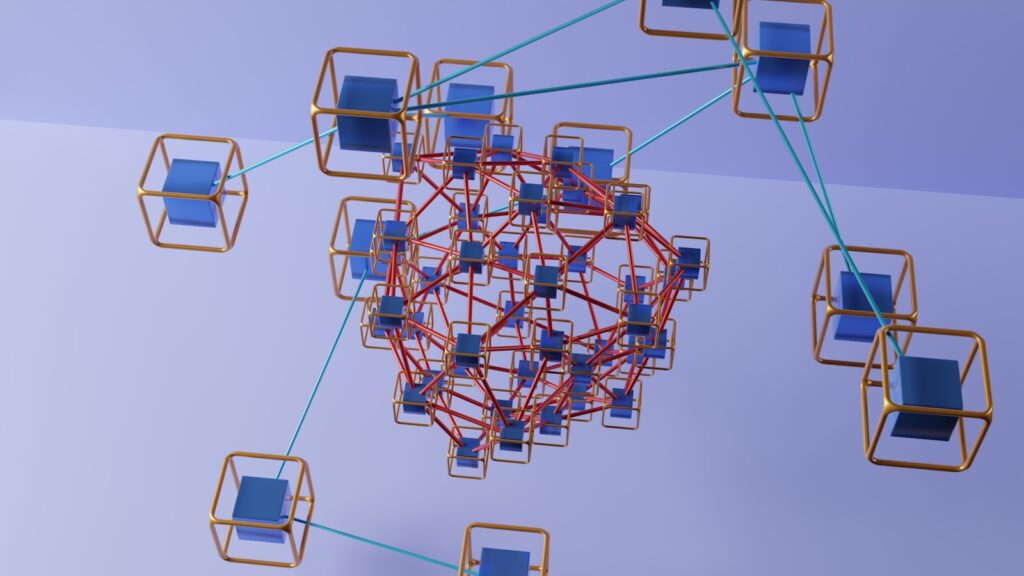Main Points:
- Layer 2 solutions are rapidly emerging as a critical innovation in the blockchain space, offering scalability and lower transaction costs.
- These solutions are essential for addressing the congestion and high fees that have plagued popular blockchains like Ethereum.
- The growing adoption of Layer 2 networks is facilitating the mainstream use of decentralized finance (DeFi) and expanding its potential applications.
- Regulatory scrutiny and the need for interoperability between different Layer 2 networks present challenges and opportunities for the future of DeFi.
The world of decentralized finance (DeFi) is undergoing a significant transformation, driven by the rapid adoption of Layer 2 solutions. These innovations are reshaping the landscape of blockchain technology, offering the scalability and cost-efficiency necessary to support the next wave of decentralized applications. As we move further into 2024, the importance of Layer 2 solutions is becoming increasingly apparent, particularly in the context of DeFi’s expansion and mainstream adoption.
The Role of Layer 2 Solutions in Blockchain Scalability
One of the most pressing issues in the blockchain ecosystem, particularly for networks like Ethereum, has been scalability. As more users and decentralized applications (dApps) flood the network, congestion and high transaction fees have become significant barriers to widespread adoption. Layer 2 solutions, such as rollups and state channels, are designed to alleviate these issues by processing transactions off-chain and only settling the final state on the main blockchain. This approach drastically reduces the load on the main network, allowing it to handle more transactions per second (TPS) and lowering costs for users.
Rollups, in particular, have gained traction as a preferred Layer 2 solution. They bundle multiple transactions into a single batch that is then submitted to the main chain. This not only reduces the data that needs to be processed on the main network but also cuts down on transaction fees. Optimistic rollups and ZK-rollups (Zero-Knowledge rollups) are two popular types, each with its own set of advantages and trade-offs in terms of speed, security, and decentralization.
DeFi’s Growing Dependence on Layer 2 Networks
The DeFi sector has been one of the biggest beneficiaries of Layer 2 solutions. With lower fees and faster transaction times, DeFi platforms can offer more accessible and user-friendly services. This is particularly important for smaller investors who were previously priced out of the market due to high gas fees on Ethereum. As a result, Layer 2 solutions are democratizing access to DeFi, allowing more users to participate in activities such as trading, lending, and staking.
Moreover, the integration of Layer 2 networks with popular DeFi protocols is expanding the range of financial services available on the blockchain. From decentralized exchanges (DEXs) to synthetic assets and yield farming platforms, Layer 2 solutions are enabling a broader array of innovative financial products. This integration is not only enhancing the user experience but also driving significant growth in DeFi’s total value locked (TVL), a key metric indicating the amount of capital being utilized within the ecosystem.

Challenges in the Layer 2 Ecosystem
Despite the clear advantages, the adoption of Layer 2 solutions is not without challenges. One of the primary concerns is the fragmentation of the Layer 2 ecosystem. With multiple competing solutions, there is a risk of creating silos where assets and data cannot easily move between different Layer 2 networks. This lack of interoperability can hinder the seamless user experience that DeFi aims to provide.
Furthermore, regulatory scrutiny is beginning to focus on Layer 2 networks, particularly in regions where authorities are concerned about the potential for money laundering and other illicit activities. As Layer 2 solutions become more integral to the DeFi ecosystem, regulators may impose stricter compliance requirements, which could increase operational complexity for developers and platforms.
The Future of DeFi and Layer 2 Solutions
Looking ahead, the evolution of Layer 2 solutions will be crucial for the continued growth and mainstream adoption of DeFi. Innovations in interoperability, such as cross-chain bridges and protocols that allow assets to move freely between different Layer 2 networks, will be essential in addressing the current limitations. Additionally, as the regulatory landscape evolves, the industry will need to strike a balance between innovation and compliance to ensure sustainable growth.
The potential for Layer 2 solutions extends beyond just DeFi. They could also play a pivotal role in other blockchain-based applications, such as non-fungible tokens (NFTs), gaming, and supply chain management. By improving scalability and reducing costs, Layer 2 solutions are poised to unlock new use cases and drive further innovation across the entire blockchain ecosystem.
In conclusion, Layer 2 solutions represent a significant advancement in the blockchain industry, addressing critical issues of scalability and cost while opening the door to new opportunities in decentralized finance and beyond. As the technology matures and becomes more integrated with the broader blockchain infrastructure, its impact will likely be felt across a wide range of industries, shaping the future of digital finance and decentralized applications.


